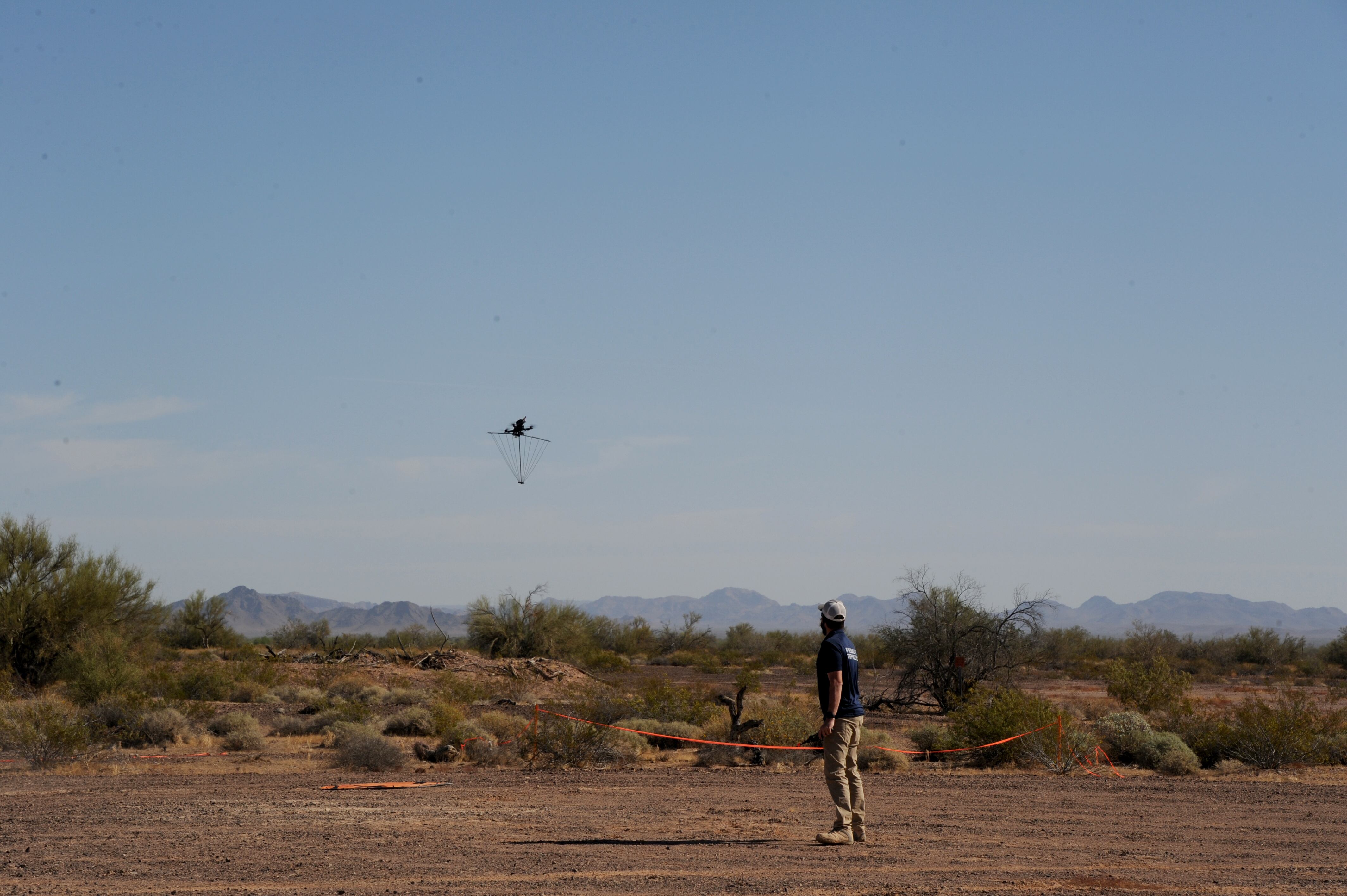WASHINGTON — The Pentagon’s Joint Counter-Small Unmanned Aircraft Systems Office has wrapped up a demonstration of high-power microwave technology capable of taking out multiple drone threats at once.
Army officials running the effort said the vendors that came with high-power microwave capabilities were successful in defeating incoming drone threats, including two at a time.
The threat of drone swarms is increasing, and the Pentagon is racing to ensure it can to defeat them. The Army is the service tasked to lead the JCO, which was established in late 2019. The office has now conducted three demonstrations — two last year in the spring and fall, and one this spring. The plan is to continue demonstrations twice a year to fix capability gaps identified by the armed services in countering small UAVs.
The most recent demonstration took place April 4-22 at Yuma Proving Ground, Arizona. Three industry teams — Epirus, Raytheon Technologies and Leonardo DRS — brought ground-based, aerial-denial systems with high-power microwave capabilities. Such systems are “defined as a solution utilizing focused Electromagnetic Pulses from a fixed ground location at range with energy sufficient to destroy or defeat sUAS over the air,” the JCO said in a statement.
“What we primarily focused on in that first week for high-power microwave was how well the effector emitted,” Michael DiGennaro, the test team lead for JCO’s acquisition and resourcing division, said during a May 11 media roundtable.
“We were looking at range to engage the targets that were inbound and the amount of time it took to either deter or defeat the target,” he added. The targets ranged among UAS groups 1, 2 and 3 and were used either one at a time or two simultaneously. (Group 1 drones weigh up to 20 pounds; Group 2 from 21 to 55 pounds; and Group 3 more than 55 pounds but less than 1,320 pounds.)
How’d the counter-drone systems perform?
The Leonardo DRS system — called a “vector inversion generator” — “was hindered in that it did not have an antenna to radiate,” DiGennaro said.
But the JCO was able to assess the technology through its ability to hand off a detected threat from the government-owned command-and-control system, and then generate the power necessary to defeat the threat. “With that, we were able to capture power output and the amount of time that the electromagnetic pulse was on the target just with instrumentation,” DiGennaro explained.
The Epirus system “was able to defeat targets in the range that is normally associated with what is currently in the field,” DiGennaro said, “and has the promise to be a little bit more effective in the future.”
Raytheon’s capability “was very much in development, shows some promise for future development,” he said, but “the ranges were somewhat shorter in their ability to defeat the incoming targets.”
The office also assessed countering small UAS as a service, or CaaS, through contractor-owned, government-operated capability at fixed locations.
The office received a total of 25 whitepapers for CaaS and selected five to demonstrate their capabilities because they met specific requirements. Those five were Anduril Industries, Black Sage, CACI, Rafael Systems Global Sustainment and SAIC.
“We had five very complex architectures out there,” DiGennaro said. “Each of them brought a host of different components for detection, identification, tracking and defeat, and we tested against each of those components both individually and then as a system, culminating in a ‘defend the forward-operating base’ scenario.”
The data collected is still being analyzed, he added, and a report will be published for limited distribution within the Defense Department next week.
“This was as much a learning exercise for us as it was for the companies,” DiGennaro said of CaaS. “We had architectures out there that had not previously been working together, components in particular, architectures that were coming out there for the first time.”
The JCO was able to form new industry partnerships as well as get companies with different elements of the engagement chain together that had not worked together before, he said. “They’re trying new combinations. They’re developing things as we go.”
Last year, in the first demonstration, the office looked at low-collateral interceptors for C-sUAS; in the second demonstration, it examined cheap, ground-launched and hand-held capabilities.
The office and some services are in the process of finalizing contracts with vendors that demonstrated technology last year to incorporate into an enduring architecture, but the JCO said it could not get into specifics until those contracts are finalized.
The JCO is in the final stages of developing what concepts and capabilities it wants to demonstrate in its next round of experimentation in the fall. The capability gaps the office wants to address will be finalized within a month, the office indicated.
Jen Judson is an award-winning journalist covering land warfare for Defense News. She has also worked for Politico and Inside Defense. She holds a Master of Science degree in journalism from Boston University and a Bachelor of Arts degree from Kenyon College.







